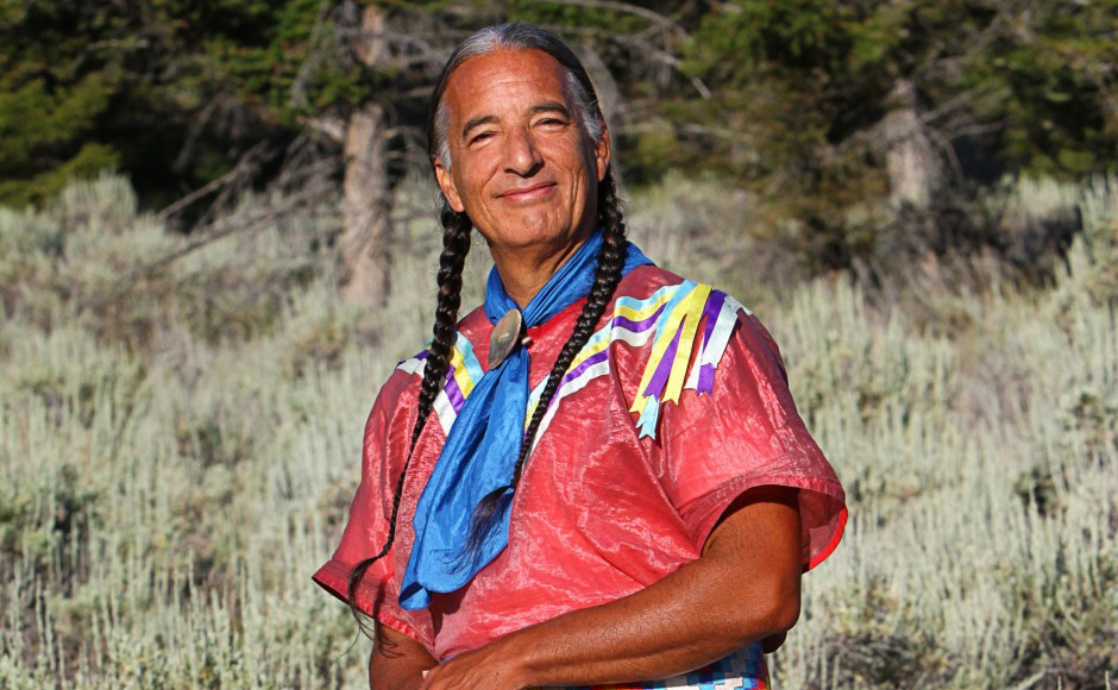The intersection of diverse cultures often serves as a poignant backdrop for understanding and appreciating the spiritual teachings of the Baha’i Faith. One such instance is the passing of Kevin Locke, a prominent Lakota legend and storyteller, whose life and legacy resonate deeply within the Baha’i community and beyond. This reflection not only commemorates his artistic and cultural contributions but also invites contemplation on the broader implications of his life’s work in the context of Baha’i principles, particularly unity in diversity, the oneness of humanity, and the transformative power of storytelling.
In examining Kevin Locke’s remarkable journey, one cannot overlook the profound influence of indigenous wisdom on contemporary spiritual discourse. As a custodian of Lakota traditions, Locke employed narrative as a vessel for conveying age-old teachings that seek to bridge the chasm of cultural disconnection. His mastery in storytelling, enhanced by his proficiency with the indigenous flute, transcended mere entertainment; it functioned as a crucial mechanism for cultural preservation and transmission of values. This singular ability mirrors the Baha’i view of the importance of cultural richness in the evolution of human civilization, encapsulated in the belief that diversity is not only an asset but an essential ingredient in the edifice of a unified society.
Locke’s artistry reflects an intrinsic understanding of humanity’s shared narrative. Within Baha’i teachings, there exists a recognition that each culture holds a piece of the puzzle that constitutes the collective human experience. This is where Locke’s work offers profound insights. Through enchanting tales and lyrical melodies, he illuminated the interconnectedness of all peoples. His narratives were not merely reflections of Lakota culture; rather, they represented universal truths that resonate across various cultural paradigms. This aligns seamlessly with the Baha’i commitment to the harmonization of science and religion, indicating that through storytelling—an art form often dismissed in the rational discourse of modernity—deeper truths may emerge that speak to our shared humanity.
Contentment in diversity is a recurring theme in Locke’s legacy. His teachings often emphasized the necessity of understanding and respecting differing perspectives, a principle deeply embedded in Baha’i philosophy. By honoring Lakota traditions, Locke implicitly invited others to celebrate their own heritages while fostering an atmosphere of mutual respect. The Baha’i Faith ardently advocates for the elimination of prejudices of all forms—a principle that aligns with Locke’s explicit vision of a world united in understanding and appreciation of diverse cultures. In this light, Locke’s contributions serve not solely as artistic expressions but as vital components of a larger dialogue promoting global unity.
Locke’s passing prompts reflections on the ephemeral nature of life and the enduring impact of cultural legacies. His life encapsulated the struggle against cultural erasure and the broader narrative of resilience within indigenous communities. In Baha’i teachings, the reverence for the past does not inhibit progress; rather, it serves as a foundation upon which future advancements can be built. Just as Locke’s stories carried forth the teachings of his ancestors, so too does the Baha’i perspective honor the wisdom of prior generations. This mutual respect nourishes an environment wherein diverse cultures can coexist harmoniously, thereby enriching the tapestry of human experience.
The act of storytelling itself can be viewed through the prism of Baha’i teachings as a means to nurture spiritual development. In Locke’s narratives, there lies an invitation to introspect and engage with one’s inner self. The transformative power of stories lies in their capacity to evoke empathy, challenge paradigms, and catalyze change. Baha’u’llah, the founder of the Baha’i Faith, emphasized the importance of education and the cultivation of virtues. Locke’s contributions mirror this tenet by utilizing narrative as an educational tool, thereby fostering not only cultural awareness but also moral growth within listeners. Through this lens, his legacy operates on multiple strata—cultural preservation, moral education, and spiritual awakening.
Furthermore, the implications of Locke’s life’s work extend beyond cultural boundaries and invite a broader examination of the role of art in spiritual expression. His dedication to sharing Lakota culture stands as a testament to the power of the arts in fostering community and solidarity. It echoes the Baha’i belief in the inherent potential of each individual to contribute meaningfully to society. By embracing his artistic heritage and disseminating it widely, Locke exemplified the Baha’i principle of service to humanity—a service that transcends geographical, cultural, and religious distinctions. His legacy inspires us to consider how we, too, can use our unique talents to build bridges of understanding in an increasingly fragmented world.
In conclusion, the poignant reflections surrounding the passing of Kevin Locke invite us to explore the deeper layers of understanding inherent in cultural narratives. His narratives served as reminders of our shared humanity, emphasizing unity within diversity—an ideal embedded in the teachings of the Baha’i Faith. As we celebrate his life, we are encouraged to honor the teachings imparted by indigenous cultures while actively participating in the ongoing dialogue that seeks to cultivate a peaceful and just world. In the end, the legacy of Kevin Locke is not merely a testament to his artistry but a call to action for all to appreciate the beauty of our shared journeys, reminding us of the profound impact that stories and traditions can have on our collective consciousness.
